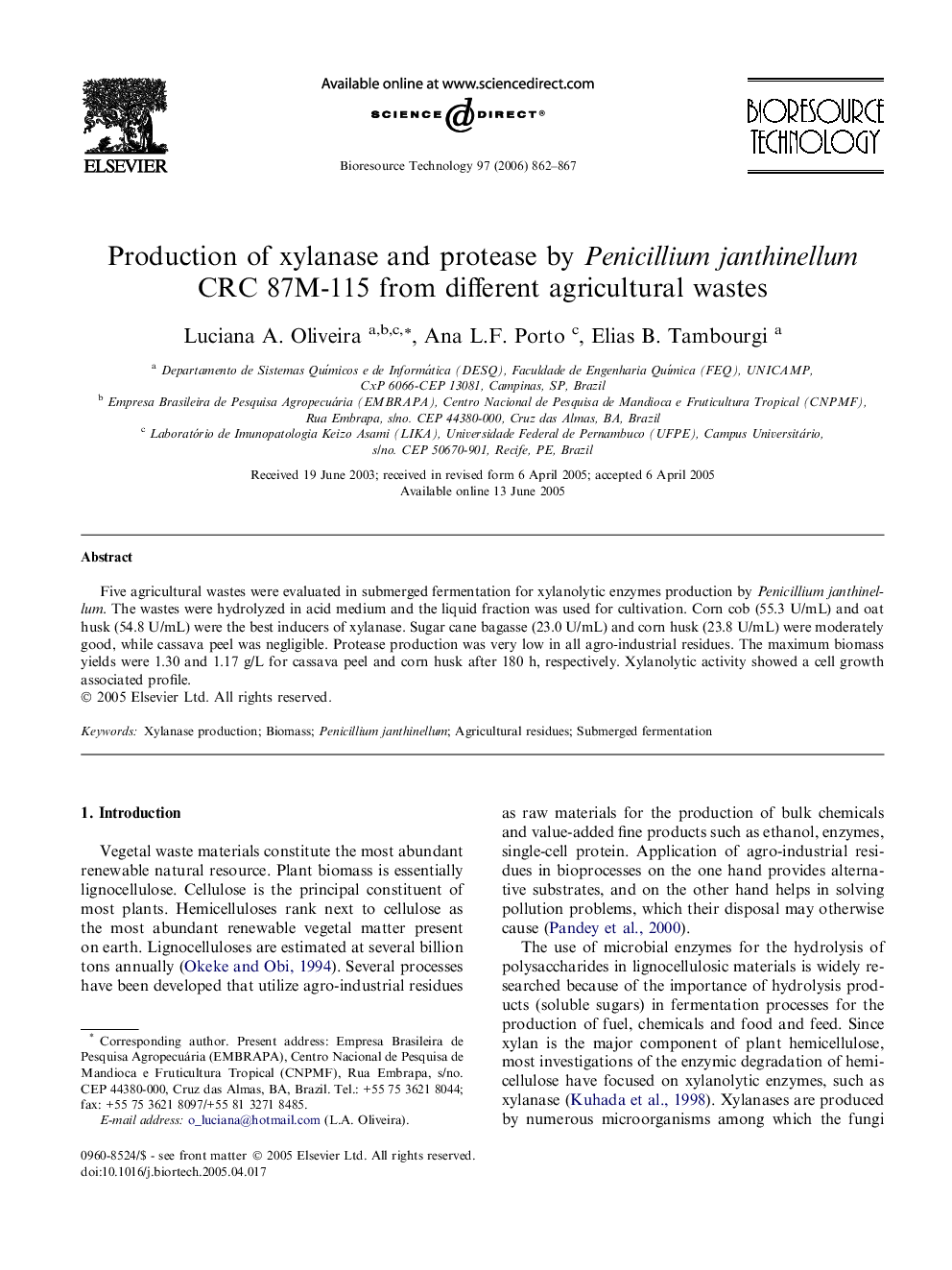| Article ID | Journal | Published Year | Pages | File Type |
|---|---|---|---|---|
| 686761 | Bioresource Technology | 2006 | 6 Pages |
Abstract
Five agricultural wastes were evaluated in submerged fermentation for xylanolytic enzymes production by Penicillium janthinellum. The wastes were hydrolyzed in acid medium and the liquid fraction was used for cultivation. Corn cob (55.3 U/mL) and oat husk (54.8 U/mL) were the best inducers of xylanase. Sugar cane bagasse (23.0 U/mL) and corn husk (23.8 U/mL) were moderately good, while cassava peel was negligible. Protease production was very low in all agro-industrial residues. The maximum biomass yields were 1.30 and 1.17 g/L for cassava peel and corn husk after 180 h, respectively. Xylanolytic activity showed a cell growth associated profile.
Keywords
Related Topics
Physical Sciences and Engineering
Chemical Engineering
Process Chemistry and Technology
Authors
Luciana A. Oliveira, Ana L.F. Porto, Elias B. Tambourgi,
